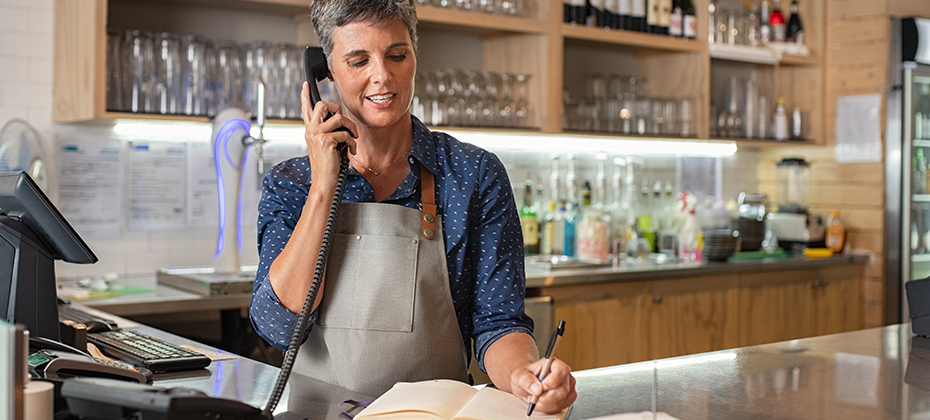All posts by Jason Weinstein, Business Development Manager

QSRs have emerged as superheroes during the pandemic, creating an entirely different consumer experience in record time by offering contactless delivery, curbside pick-up, and other innovations that have allowed them to stay open and operational when so many other businesses have shuttered. But as many states are still moving through their phased re-opening plans and more options become available to consumers, QSRs are challenged with keeping their momentum going. How can they continue to build on their success? The key is activation. Advertising on the right channels at the right time. The more QSRs can offer experiences that leverage the power of data to better speak to their customers and address their unique needs, the better chance they have of continuing to succeed in these unwieldy times. As we move into the fall and winter, and as more and more people look to QSR’s to help with their meal plans, consider the following: 1. Use data to create a more robust loyalty program. There’s no question consumers have plenty of QSRs to choose from and using a loyalty program is an excellent way to ensure they continue to view you as a preferred dining destination. But you might be surprised to learn how much of a difference it can make to your bottom line. PYMNTS reported that in 2019, Starbucks President and CEO Kevin Johnson shared how the company’s active mobile app rewards membership grew to 16.8 million users, which comprised 41% of sales in U.S. stores. The PYMNTS Restaurant Readiness Index also shows that 79.5% of QSR customers and 47.5% of QSR managers see loyalty programs as a feature that is important to a restaurant’s success. Now is a great time to review your loyalty program (or create a new one) and see if you can expand it to offer more perks, thereby enticing more customer interaction. A strong loyalty program should include a combination of your own customer data, enriched with third-party data for deeper customer insights, such as behavior, lifestyle and interests. 2. Make it easy for customers to order, purchase and pick-up with mobile ordering. Mobile ordering is no longer the wave of the future—it’s part of the new now. PYMNTS reported that Dunkin’ Brands CEO Dave Hoffmann noted on-the-go ordering experienced an average weekly sales increase of 25% year over year—and this growth was especially key in locations without a drive-through. For customers who want an easy option that allows them to order, pay and pick-up at curbside, mobile ordering is the ultimate in simplicity, and your data can help you determine who is most primed to take advantage of this option so you can push it directly to them. 3. Offer demographic and location-specific promos. The power of data can help you know a lot about your customers, from age and occupation to whether or not they have a family, how they spend their time, and how much of that time is spent at your competitor’s restaurant. This data can help you craft promotions that can speak directly to your consumer, ensure you’re advertising on the channels they prefer and frequent and get them in your door. When you know you cater to parents who are tired of a long day of homeschooling and work Zoom meetings, you can tailor and execute a promo campaign that speaks directly to their needs and deliver it to their preferred channel, encouraging them to skip cooking and order from you instead. Or maybe you have locations that are close to college campuses, allowing you to entice students with a two-for-one deal they just can’t pass up. And as offices start the slow process of opening back up, there’s an opportunity to welcome workers back to the neighborhood with a special curbside or delivery pick-up deal. 4. Ensure your customer knows your brand values. More and more, consumers are becoming conscious of who they spend their money with and why. As Longitude Design points out, this is something Ben & Jerry’s does exceptionally well, and their value message is spread across everything the brand does, from their scoop shops to their store-bought pints to their company-branded events. This is your opportunity to share what you value as a company and a brand, and how it aligns with your consumer’s lifestyle. Is your food sustainably sourced? Is your packaging environmentally friendly? Be transparent about your supply chain, share how you care for your employees, give some insight into the prep process behind your food, as these insights will help your consumer gain trust in you, which in turn creates loyalty. Social media is a great way to get the word out about your value-based operational initiatives. To learn more about how you can use data to build on and enhance the new customer QSR experience, visit our Restaurant Marketing Solutions page.

As the pandemic took hold of the country and stay-at-home orders were put in place, one of the consumer categories that was most adversely affected was the restaurant industry. But while sit-down restaurants were forced to pivot to curbside delivery and other inventive means to make ends meet, quick-service restaurants (QSRs) that already had a solid delivery program or drive-through in place saw a surge in new guests. “Dinner and a movie” took on a different meaning as people either picked up or ordered in to make date night happen, and QSRs rose to the occasion like never before. With some states beginning phased re-openings of non-essential businesses, some restaurants are now allowed to open so long as they follow social distancing rules or allow for outdoor dining areas. But that doesn’t mean consumers will be ready to race out and participate in this new dining experience. Many may remain apprehensive about safety and continue to “dine at a distance” until they’re confident that they can remain healthy, or until a successful vaccine goes into use. Even as states begin their phased re-opening plans, many continue to work from home—which has greatly affected both dine-in and QSR venues. Those who saw a robust lunchtime crowd probably saw a drop-off while business-based locals shifted their office plans. However, new opportunities have emerged for restaurants to reach out to their regular lunch crowd to offer delivery or attract a whole new lunch crowd who may not have thought to order from them before. Between the challenges of a post-pandemic world, a shifting of diner priority, and an uncertain future facing the restaurant world, it’s now more important than ever before to leverage an intelligent, data-driven marketing strategy to ensure your campaigns reach the right consumers, and also attract new customers to expand your customer base over time. All of this can be done using the power of data, but having the right data is key to making the most of your marketing efforts. As you’re crafting your current marketing plans, it’s important to look at all the variables you need to address to create more targeted messaging, thus helping you zero in on your most desired consumer base. The first thing to consider is, how well do you know your guests, and what do you know about them? If you have no insight into their dining habits or preferences, it will be challenging to come up with messaging that will speak to them. But with the right data, you can discover if they frequent your competitor’s locations (and if so, how often), which apps they’re using to order food, which days of the week, and even which meals they are most likely to order. You can also use this information to better understand how often you factor into your customer’s dining plans by understanding if they are beginning to commute again, or continuing to work from home, and if the latter, do they live near one of your locations. Data can also help you discover more about who they are, so you can even further tailor your messaging to their needs. Let’s say your target customer is married with children. Addressing their busy life as a professional and a parent, and sharing how you can ease the burden of dinnertime to make life easier for them, may be exactly the kind of message of support they need to encourage them to reach out to you. Using data based on demographics, lifestyle, behavior, attitudinal and mobile location data can help you cook up a marketing strategy with precision and success, resulting in more diners knocking on your door (or at least, calling for take-out). Another key component to consider is the use of mobile location data, which Zeta Global cites1 as being the most important data chain restaurants can use for their marketing plans. Not only can this data be used to better understand share of wallet and potential up-sell opportunities, but it can also be leveraged to reach out directly to potential new customers that have historically frequented your top competitors. You can also use mobile location data to connect with consumers who may be more drawn to your restaurant because of your delivery or curbside pick-up options, and craft outreach based on that information that will encourage them to order with you. As Hospitality Tech pointed out2, building trust in a post-pandemic world is key for QSRs who want to continue to encourage loyalty with current guests, and entice new ones to place orders. The key to making that happen is data. By deploying marketing messages that resonate, activating them on the channels your guests use most, then measuring the impact of your campaigns, QSRs can create more opportunities for success and customer connection that can translate into real, long-term results. Plus, the right data can help you increase store traffic with high value guests, reactivate guests who haven’t visited in a while and find new individuals who live nearby that closely resemble your current high value guests. Experian has decades of experience in helping organizations better communicate with their customers across all marketing channels. How can we help you? Find out more about our restaurant marketing solutions. 1https://zetaglobal.com/blog/chain-restaurants-need-customer-data/ 2https://hospitalitytech.com/new-marketing-communications-playbook-during-covid-19